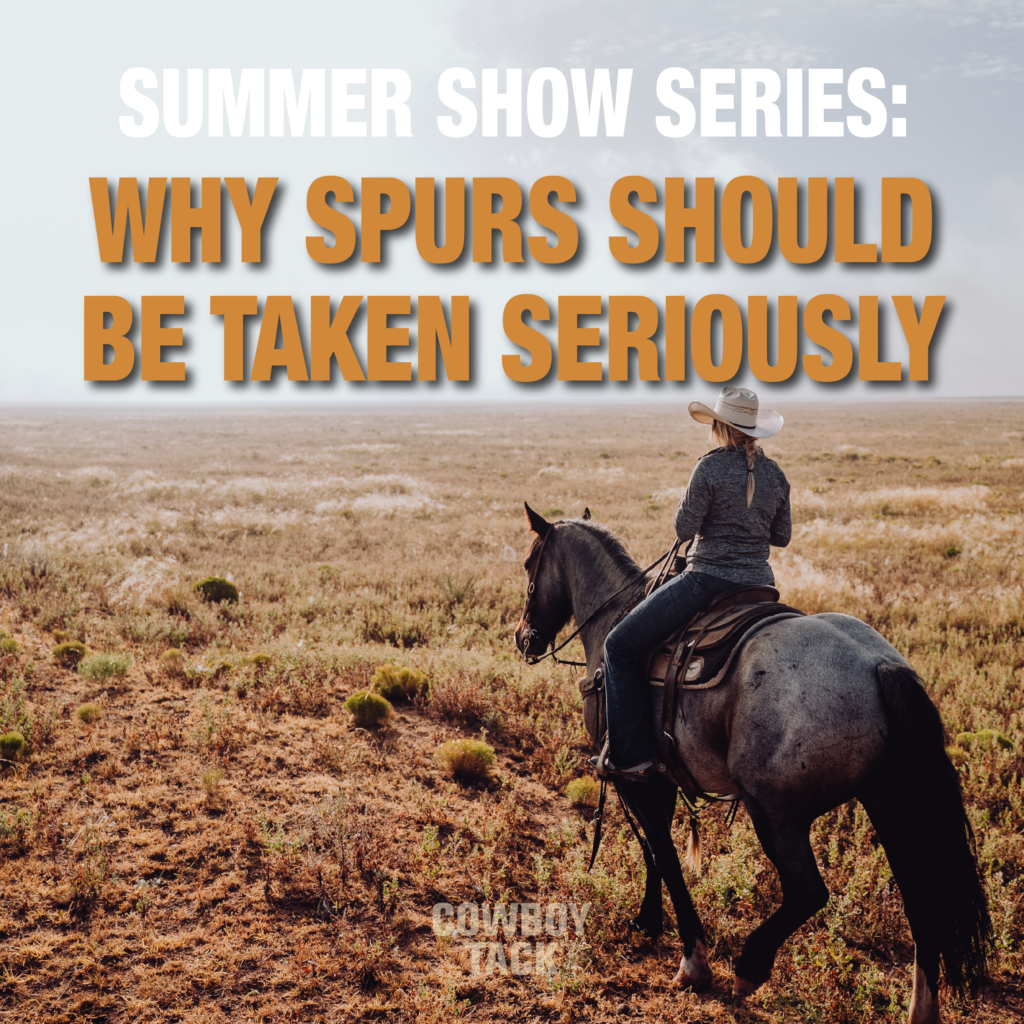
Western riding contains many different disciplines with varying techniques and skill sets, and spurs are used in each one of them. It’s amazing that one instrument is able to communicate so many different messages in a variety of settings, but how do they work? And why do so many riders wear them?
Well, much like whips and crops, spurs are an artificial aid; your natural aids being your legs, hands, and voice. While riding, you use these aids, or cues, to command your horse in a certain direction. In barrel racing, for example, riders have a need for speed. Often, when horsemen need their horse to pick up the pace, they use their spurs to communicate. The same can be done for when a rider needs their horse to turn left or right. Spurs are incredibly useful tools, but they require proper training and need to be paired with the use of natural aids. They aren’t meant to replace good riding skills, only to supplement them, and if the rider is relying on them too much or using them for discipline, it will only upset and confuse the horse further.
That being said, spurs are not to be used as a form of punishment. Spurs come with rowels that vary in severity, or “bite,” ranging from soft and mild to sharp and severe. Either can be used depending on the horse’s disposition, responsiveness to cues, and the rider’s experience level. While rowels are pointed and attention grabbing, they are never meant to bring harm to a horse.
So, as the weather warms up, and people are out leisurely riding, it’s important to remember the true purpose and benefits of spurs, and understand that if you aren’t comfortable using them, you probably shouldn’t. Make sure your natural aids are in order before considering the artificial.
To learn more tips or hear from our pro-riders, stay tuned! We’ll be helping you find your footing all summer long. In the meantime, check out the different types of spurs that we offer, you’re sure to find some you love!

Contact
This is Partrade
Shop Links